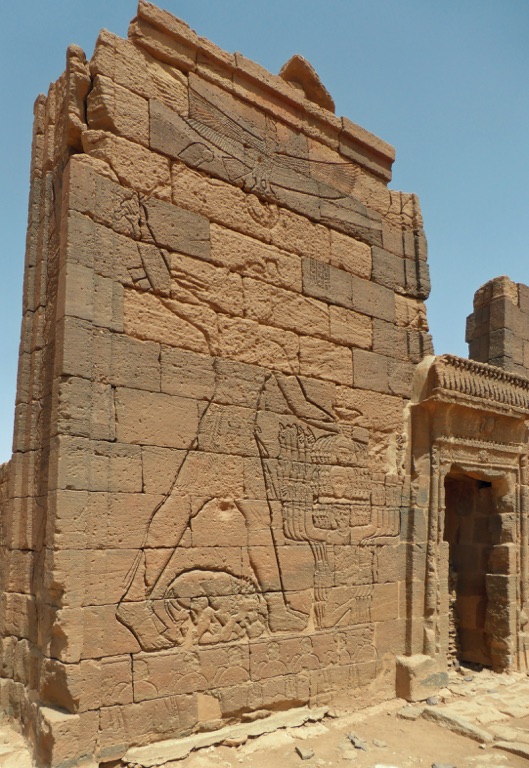Summary
The Historical Significance of Apedemak Temples
Hidden within the arid landscapes of Sudan, the Temples of Apedemak hold an aura of ancient mystery and historical importance. These magnificent structures dedicated to Apedemak, a lion-headed warrior god revered in Nubian mythology, provide an invaluable window into the Meroitic period of Nubian history. Built between the 2nd century BCE and the 4th century CE, the temples stand as testaments to the architectural prowess, religious fervor, and sociopolitical dynamics of the Kingdom of Kush. They capture the blend of Egyptian, Hellenistic, and indigenous cultural influences, offering researchers crucial insights into the intricate rituals once performed within their walls. The resilience and restored elegance of these sites mesmerize visitors, serving as a poignant reminder of the rich cultural heritage of Nubia and its once flourishing civilizations.
Get your dose of History via Email
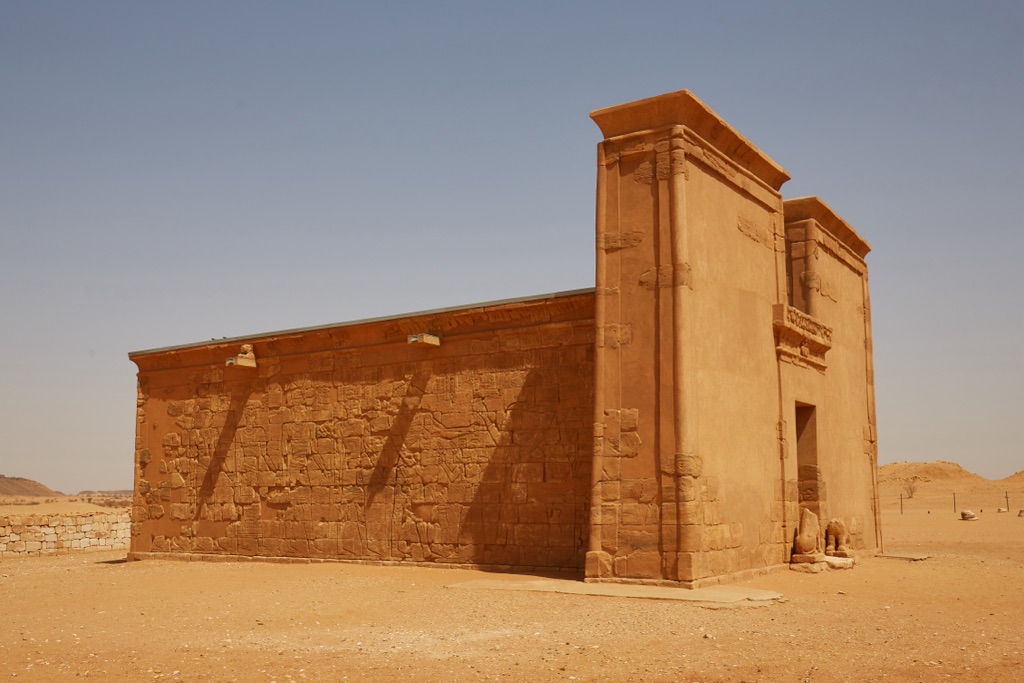
Architectural Mastery and Artistic Splendor
The Temples of Apedemak feature intricate carvings, striking bas-reliefs, and monumental columns that exhibit a mastery of artistic expression and architectural design. Within these hallowed walls, history unfolds through detailed depictions of ruling figures, deities, and religious ceremonies etched on the ancient stone. Imposing yet graceful, the temples embody a harmonious fusion of form and function, with the main temple at Naqa, known for its prominent kiosk and inner chambers, standing as a highlight. Visitors marvel at the blend of symmetrical structures and ornate decorations, recognizing the skilled craftsmen who, eons ago, shaped and adorned these stones with an enduring legacy.
Cultural and Tourism Impact
Today, the Temples of Apedemak captivate both the culturally curious and avid historians, attracting visitors worldwide to Sudan’s remote region. The temples not only contribute to our understanding of Nubian history but also bolster the local tourism industry. As conservation efforts persist, these sites have the potential to foster greater appreciation and preservation of Nubian antiquities. Whether one seeks a spiritual journey through ancient realms or to simply bask in the grandeur of bygone eras, the Temples of Apedemak offer an authentic encounter with history, inviting all to traverse the chronological corridors of a civilization that once ruled along the Nile.
Historical Background of The Temples of Apedemak
The Lion God of Meroë
Sudan’s ancient Temples of Apedemak pay homage to a powerful deity. Apedemak, the lion-headed god, holds a prominent place in Nubian mythology. Revered as a warrior god with a feline ferocity, his veneration dates back to the Meroitic Kingdom around 300 BCE to 350 CE. The temples dedicated to him symbolize his might and the valor of the Nubian people who built these magnificent structures. They stand as a proud testament to a civilization deeply rooted in divine reverence and martial prowess.
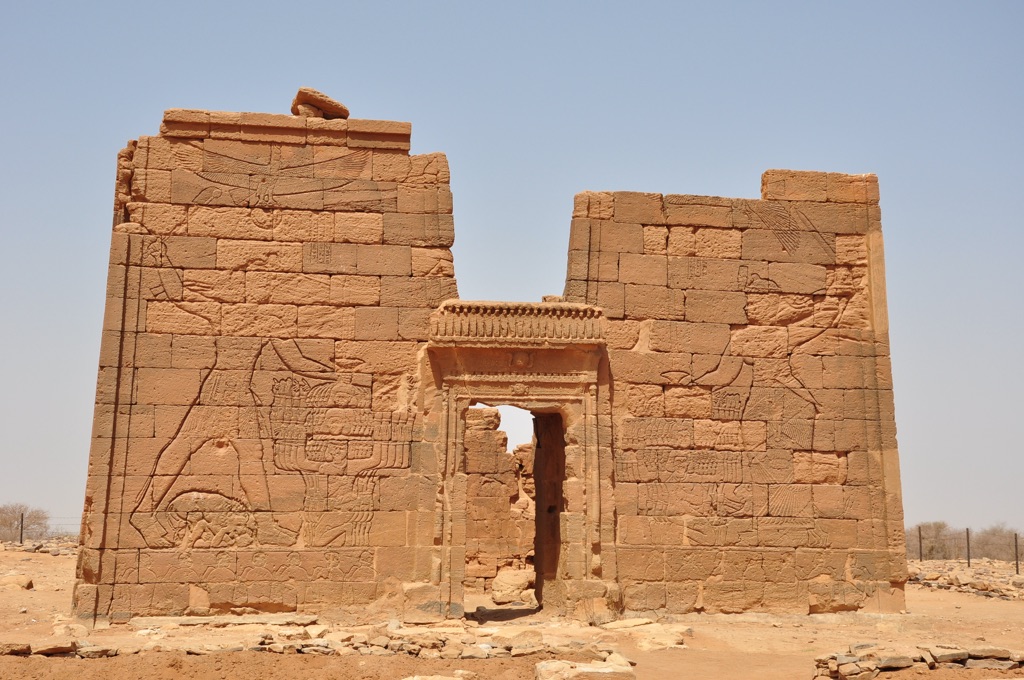
Architectural Wonders of the Desert
The construction of the Apedemak temples showcases advanced building techniques of ancient Nubia. Sites like Naqa and Musawwarat es Sufra reveal intricate stonework and a clarity of design that rivals contemporary architecture. These edifices provide a glimpse into the sophisticated world of the Nubians. With walls adorned by carvings and engravings, the temples narrate stories of battles, rituals, and offerings to the gods. Today, they still exude an air of mystique and grandeur, drawing in those eager to uncover their secrets.
A Meeting of Cultures
The artistic styles present in the Temples of Apedemak mirror a cultural melting pot. Here, the amalgamation of African, Egyptian, and Greco-Roman influences unfolds. It tells a tale of interaction and exchange across the borders of empires. The iconography inside these sanctuaries blends Nubian artistry with Egyptian motifs, punctuated by Hellenistic touches. These nuances highlight the temples as spaces where civilizations converged and cultures thrived in coexistence.
Despite centuries weathering the elements, the temples’ legacies endure. Archaeologists and historians work tirelessly to piece together the faded stories the temples hold. As excavations and restorations progress, we gain a clearer understanding of the religious and ceremonial practices that occurred within. The temples offer an enduring snapshot of the spiritual life in ancient Nubia, enriching our comprehension of a complex historical tapestry.
Not only do the Temples of Apedemak represent a bygone era, they also inspire current generations. They serve as a symbol of heritage for the Nubian people and a beacon for those seeking connections to the past. As custodians of this ancient legacy, current efforts ensure the safeguarding of these historical monuments for future exploration and admiration. As they endure, the Temples of Apedemak continue to echo the splendor of civilizations past, amidst the silence of the Sudanese desert.
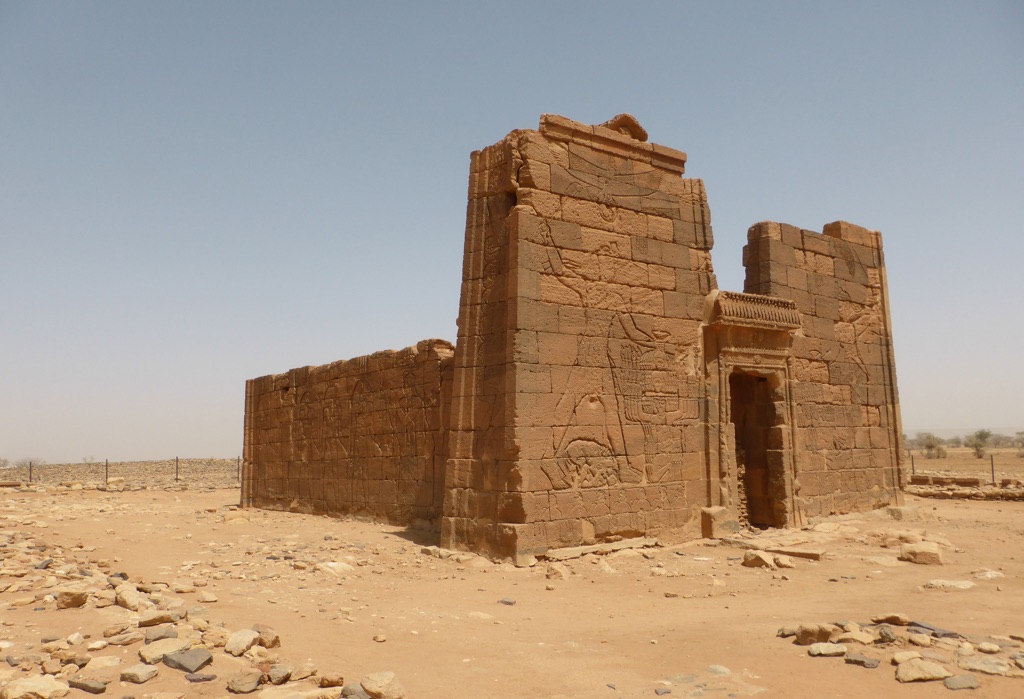
The Discovery of The Temples of Apedemak
An Archaeological Breakthrough
In the early 19th century, treasure hunters and explorers began to uncover the faded grandeur of ancient Nubia, leading to the rediscovery of the Temples of Apedemak. Amid these temple hunters, the French mineralogist Frédéric Cailliaud made remarkable strides. His expeditions into the region, notably between 1819 and 1822, marked a pivotal moment as he brought to light the ruins of the temples, which had been shrouded by the sands of time and nearly forgotten by the outside world.
Unveiling the Lost Empire
Cailliaud’s discovery was not an isolated event; it sparked a wave of interest in Sudan’s ancient heritage. Following his journeys, other archaeologists and historians, enticed by his findings, embarked on their own quests. They aimed to unravel the mysteries of the Kingdom of Kush. Ultimately, their efforts drew attention to the majestic nature of these structures and the stories they held, highlighting the opulence of a once-mighty empire that had flourished alongside—and sometimes in rivalry with—ancient Egypt.
Western Exploration Meets African Heritage
While Cailliaud and his successors spearheaded the exploration of the Temples of Apedemak from a Western perspective, it’s pivotal to acknowledge the local custodians of this heritage. The indigenous communities had preserved oral histories and legends of these sacred sites, bridging the gap between past and present. It was through this confluence of local knowledge and archaeological curiosity that the temples revealed more of their long-guarded secrets, drawing intrigue from scholars worldwide.
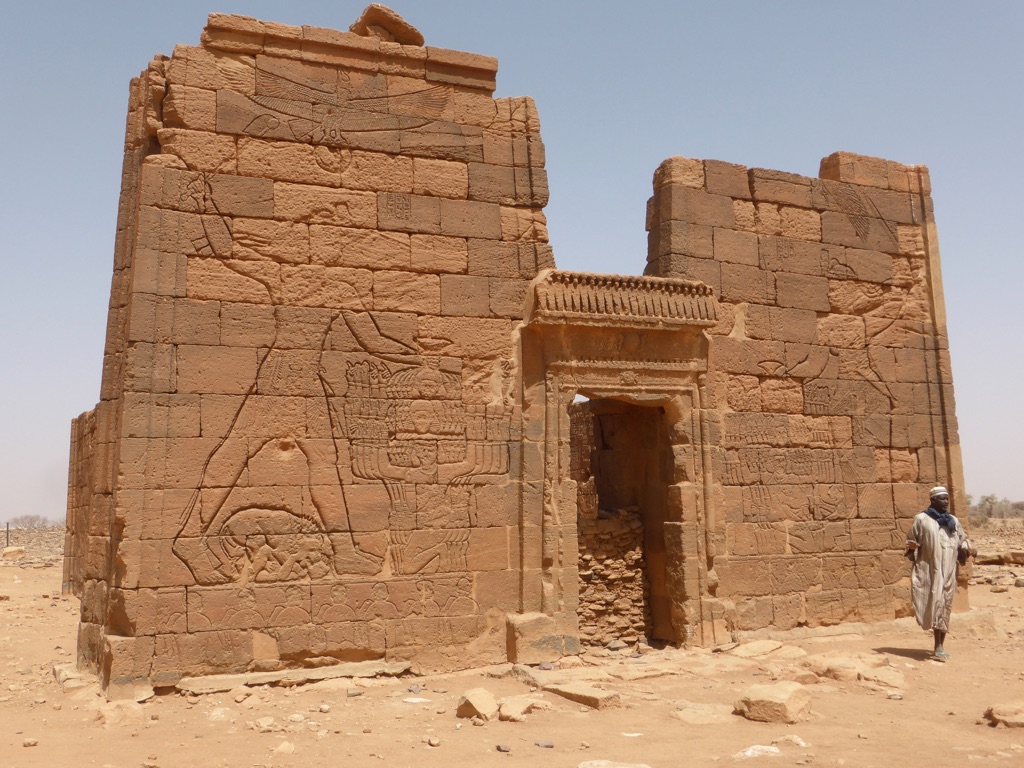
Progressing into the 20th century, the discovery of the Temples of Apedemak continued to make waves. Excavation teams, armed with more refined archaeological techniques, began painstaking conservation and documentation efforts. They aimed to repair the wear of centuries and shed more light on the temple’s multifaceted history. This heralded a new era of appreciation for Nubia’s architectural and cultural achievements.
Today, the Temples of Apedemak stand as powerful symbols of heritage, testament to the extensive and sophisticated history of the African continent. Through ongoing archaeological work and preservation efforts, these temples continue to offer fresh insights and discoveries, allowing humanity to connect with the ancient world and gain a deeper understanding of history’s intricate mosaic.
Cultural Significance, Dating methods, Theories and Interpretations
Unlocking Historical Timelines
Establishing the age of the Temples of Apedemak involved various dating methods. Radiocarbon dating of organic materials and thermoluminescence for ceramics provided timeframes for when these structures were erected. Archaeologists also used relative dating, comparing objects found in the temples with those of known ages. These scientific approaches have led to a consensus that the temples were constructed in the Meroitic period, a flourishing era in Nubian history.

Center of Spiritual Power
The cultural impact of the Temples of Apedemak is broad and profound. They were once pivotal in the religious life of Nubia, serving as a nexus for worship of Apedemak. Pilgrims and warriors alike would have been drawn to these sites, with offerings and prayers aimed at securing protection and victory. The representations of Apedemak as a warrior god further enhanced the cultural identity of the Nubian people, intertwining spirituality with their martial reputation.
Mysterious Myths and Scholarly Scrutiny
Several theories circulate about the peculiarities of the Temples of Apedemak, particularly regarding the syncretism evident in the art and architecture. Some researchers postulate that the fusion of African, Egyptian, and Greco-Roman features indicate a melting pot culture, while others suggest it represents a strategic alignment or subjugation under the ruling powers of the time. There is also speculation on the purposes of different temple spaces, with ongoing discussions interpreting them as places for ritual, administration, or even learning.

Theories concerning the decline of the Temples of Apedemak are abundant, ranging from environmental factors to conquests by external forces. While some interpretations cite evidence of a gradual decline due to shifting trade routes and ecological changes, others point to the temples’ defacement, proposing targeted religious reformation or iconoclasm. These theories continue to evolve with each archaeological discovery, piecing together the narrative of these ancient structures.
Interpretations of the Temples of Apedemak have also reflected broader discussions about identity and power in ancient African societies. The depictions of regal figures and deities not only shed light on the rituals and beliefs of the Meroitic people but also prompt a reevaluation of historical power dynamics in the region. The understanding of these temples, their significance, and the stories they encapsulate, is an ongoing journey, enriched by each successive layer of scholarly inquiry and excavation.
Conclusion and Sources
In retracing the majestic legacy of the Temples of Apedemak, we uncover more than just structures of stone and art. They are enduring icons of cultural resilience and complexity. Through their impressive carvings and towering presence, they narrate the tale of a civilization deeply interconnected with the divine, standing as a testament to the strength and sophistication of the Kingdom of Kush. As archaeological explorations continue to reveal more about their creation, purpose, and ultimate decline, they provide invaluable insights into the traditions, beliefs, and socio-political structures of Nubia. The enduring legacy of the Temples of Apedemak, deeply etched in stone and memory, continues to captivate and educate, reminding us of humanity’s vast and varied tapestry of history.

For further reading and to validate the information presented in this article, the following sources are recommended:
Or you can check any of these reputable archaeological and historical texts:
Adams, W. Y. (1977). Nubia: Corridor to Africa. Princeton University Press.
Shinnie, P. L. (1996). Ancient Nubia. Kegan Paul International.
Török, L. (2002). The Kingdom of Kush: Handbook of the Napatan-Meroitic Civilization. Brill.
Welsby, D. A. (1996). The Kingdom of Kush: The Napatan and Meroitic Empires. British Museum Press.
Wildung, D. (1997). Sudan: Ancient Kingdoms of the Nile. Flammarion.

